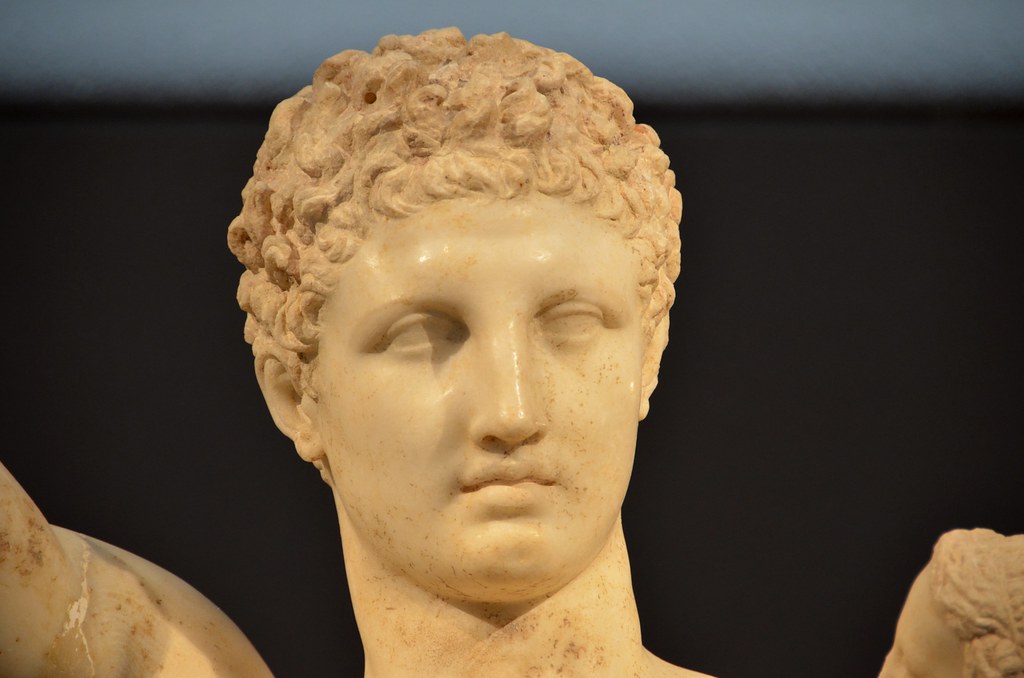
Hermes of Praxiteles, 440430 BCE, Olympia Museum (6) Flickr
Hermes dangles something, now lost, and baby Dionysos reaches toward it. (Our cast restores a bunch of grapes along with the baby's arm, on the evidence of a Roman wall-painting from Pompeii). The statue was long thought to be the actual Greek master-piece by the sculptor Praxiteles (4th c. B.C.) mentioned by the traveler Pausanias (ca. A.D.

Hermes of Praxiteles, 440430 BCE, Olympia Museum (1) Flickr
Praxiteles. Praxiteles was the most renowned of the Attic sculptors of the 4th century B.C. He was the first to sculpt the nude female form in a life-size statue. While no undisputed attributable sculpture by Praxiteles has survived, many copies of his works have survived. Praxiteles and his school worked almost entirely in marble.

127. Museu d'Olímpia. Hermes de Praxiteles OlímpiaMuseuH… Flickr Photo Sharing!
Hermes of Praxiteles. Credit: Roccuz, CC BY-SA 2.5 it/ Wikipedia The statue of Hermes and the Infant Dionysus, supposedly created by Praxiteles, was discovered on May 8, 1877 but its influential presence makes it a timeless piece of Hellenism, and later, western culture itself.. It is seen as the epitome of the ideal image of youthful gods in Greek art.
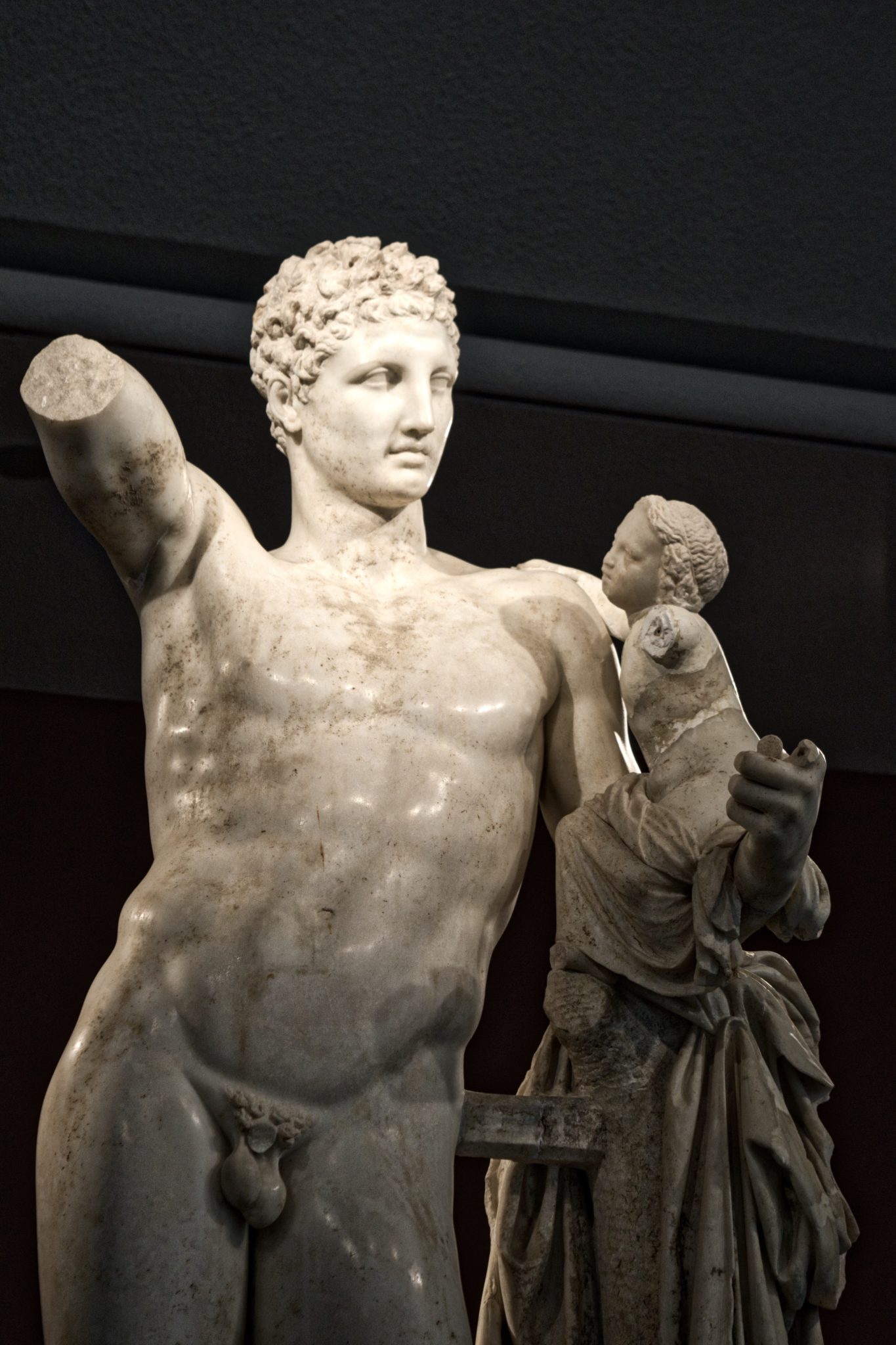
Day trip to Ancient Olympia & Foloi Oak Forest
The statue, known as the Hermes of Praxiteles, or the Hermes of Olympia, was found in the ruins of the Temple of Hera in Olympia, Greece. The priceless artwork is displayed at the Archaeological Museum of Olympia. The marble sculpture dates back to the fourth century BC, based on a remark recorded by the second century Greek traveler, Pausanias.

Hermes of Praxiteles, 440430 BCE, Olympia Museum (11) Flickr
According to the ancient Greek history Praxiteles was born in the city of Athens in the year 395 BC. (Corso, 110) He was only twenty years old when he first constructed a notable monument, which still holds its value in the ancient history of Greece. The term Praxiteles refers to "who makes completely" or it also may mean, "who finishes".

Hermes by Praxiteles Probably one of my most favorite pieces of all time... ever. Ancient
Ancient sculpture. Jun 2011. Carved by Praxiteles from Parian marble, the statue of Hermes has its own gallery in the archeological museum. The statue is a little over 2 meters high and depicts the messenger of the gods carrying the infant Dionysus to the nymphs of Boeotia.
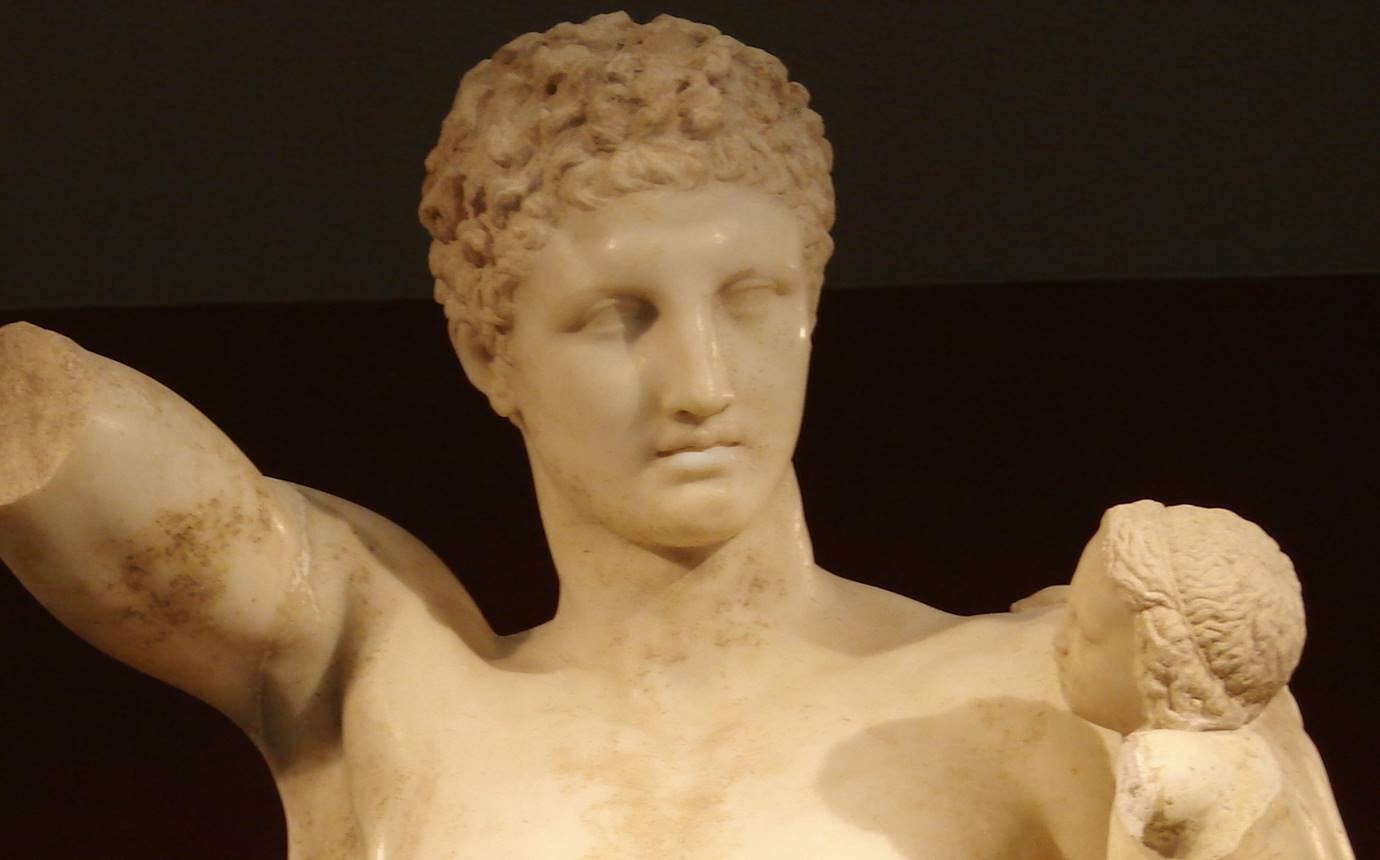
HISTORIA DEL ARTE temas, imágenes y comentario ** PRAXITELES. Hermes con Dionisos
On the Hermes of Praxiteles - Volume 3. page 91 note 1 This is corroborated by the painting just quoted from Furtwängler in which the Satyr is looking at the fruit. Mr. Murray, A. S. (Academy, March 18, 1882)Google Scholar offers the following solution: "It is objected that in such circumstances Hermes would necessarily be looking at the child. This however is not the case.
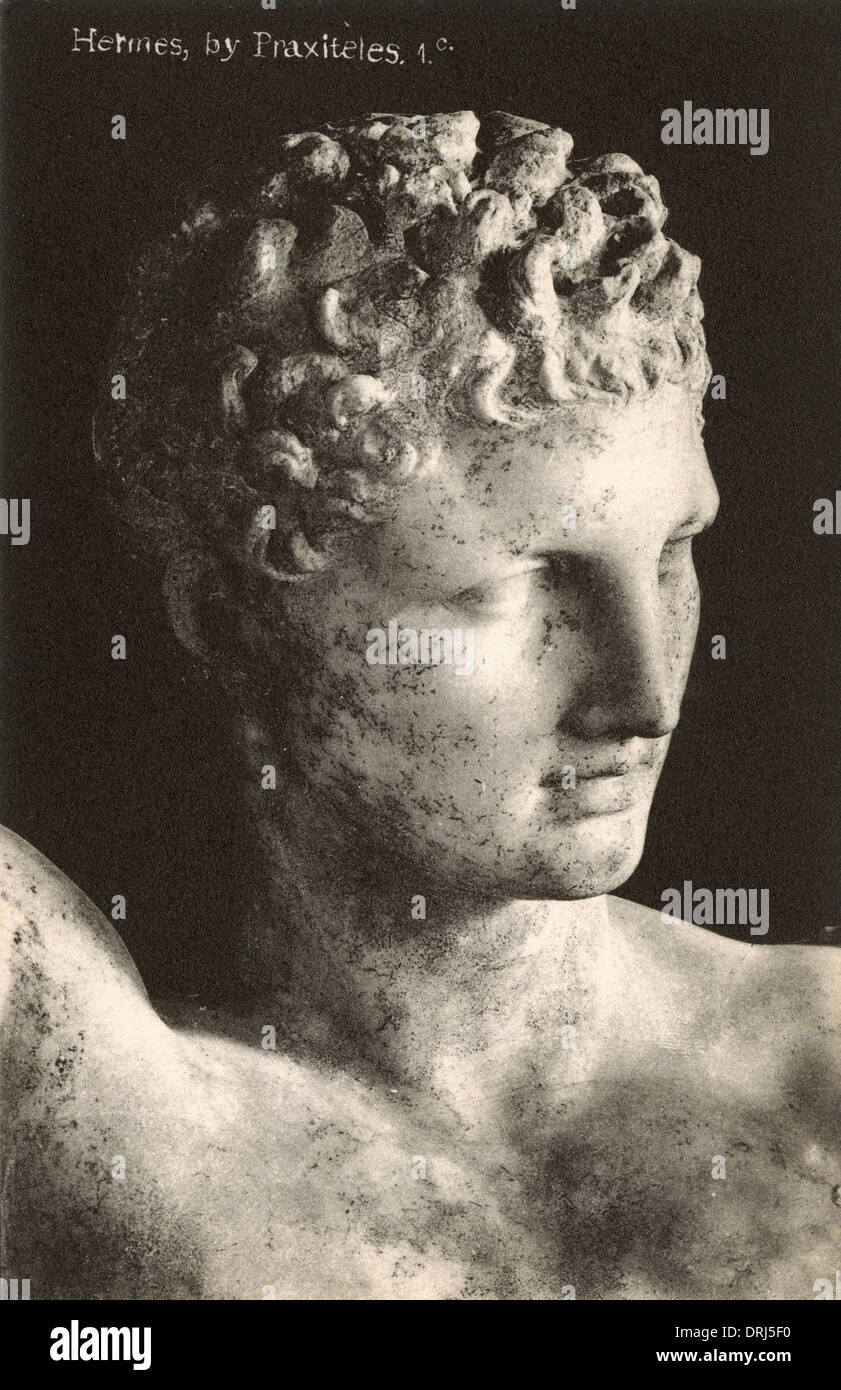
Estatua de mármol de Hermes de Praxiteles I Fotografía de stock Alamy
Praxiteles brought the gods down to a human level; he made them less majestic but gave them a consummate grace. The marble Hermes Holding the Infant Dionysos was found in 1877 in the Heraion at Olympia, where Pausanias, who ascribes it to Praxiteles, had seen it in the 2d century A.D. Whether it is a Greek original, a Greek copy, or a good.
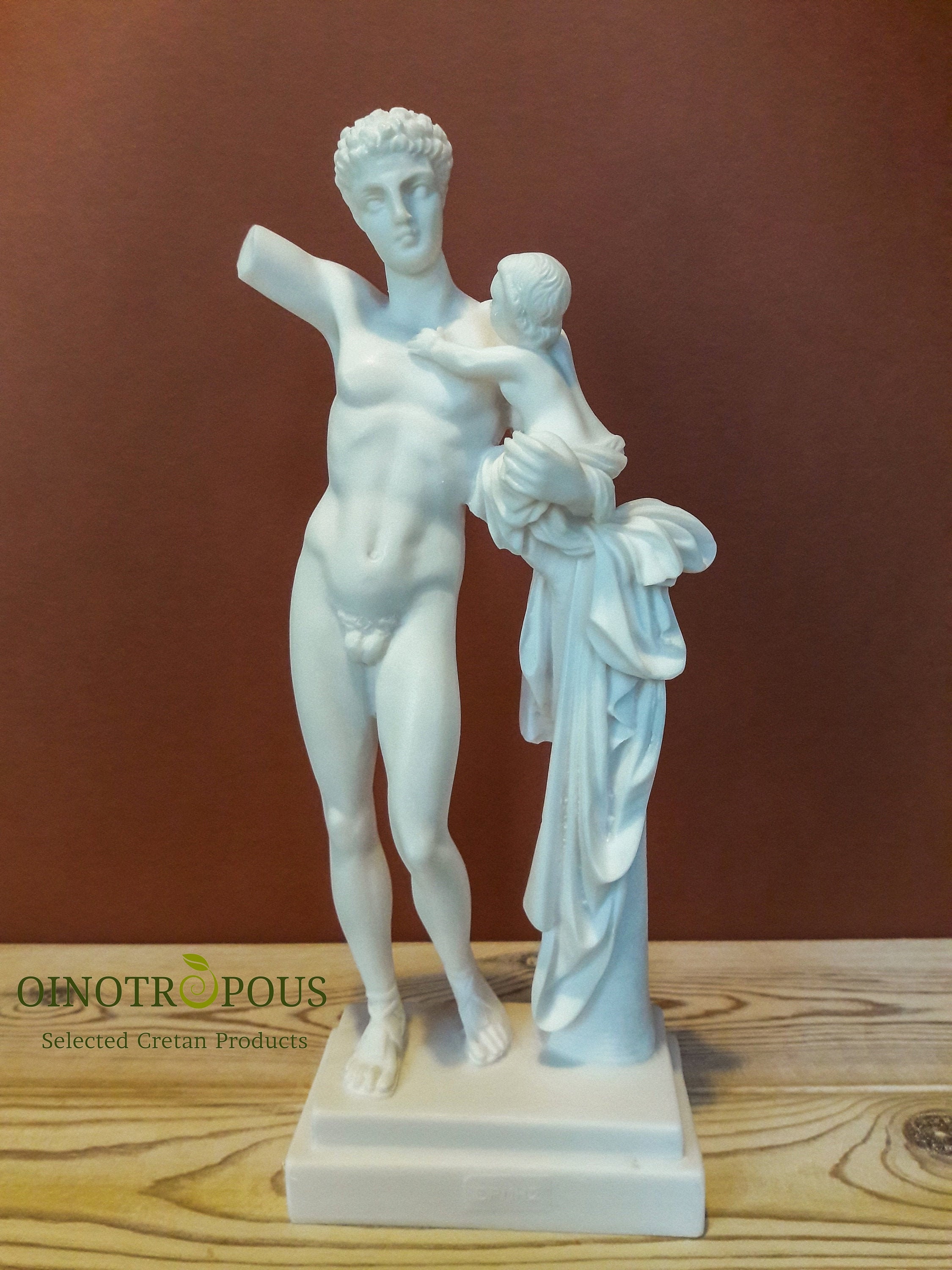
Hermes of Praxiteles Hermes and the Infant Dionysus Male Etsy
Hermes con Dionisos niño (h. 340-330 a. C.) Praxíteles. Museo Arqueológico de Olimpia. DESCRIPCIÓN: Se trata de un grupo escultórico, de tipo figurativo y carácter naturalista, de bulto redondo. Está formado por Hermes y Dionisos, el tema es mitológico y representa a Hermes, dios mensajero, ofreciendo un. racimo de uvas a Dionisos (dios.

Hermes of Praxiteles, Olympia Museum, Greece by Dimitrios Pergialis Ancient greek art
Praxiteles, (flourished 370-330 bce), greatest of the Attic sculptors of the 4th century bce and one of the most original of Greek artists. By transforming the detached and majestic style of his immediate predecessors into one of gentle grace and sensuous charm, he profoundly influenced the subsequent course of Greek sculpture.. Nothing is known of his life except that he apparently was the.

Hermes of Praxiteles sculpture (Hermes and the Infant Dionysus), Olympia, Pelopponese, Greece
Hermes and the Infant Dionysus, also known as the Hermes of Praxiteles or the Hermes of Olympia is an ancient Greek sculpture of Hermes and the infant Dionysus discovered in 1877 in the ruins of the Temple of Hera, Olympia, in Greece. It is displayed at the Archaeological Museum of Olympia . It is traditionally attributed to Praxiteles and.

Hermes at Olympia, October 2011 The Hermes of Praxiteles i… Flickr
Hermes and the Infant Dionysos. Also called the Hermes of Olympia or the Hermes of Praxiteles. Scholarship is divided over whether this is a Greek original by famed sculptor, Praxiteles, a Roman copy of his statue, or the work of a lesser-known sculptor of the same name. If it is a Greek original, its survival is unique.
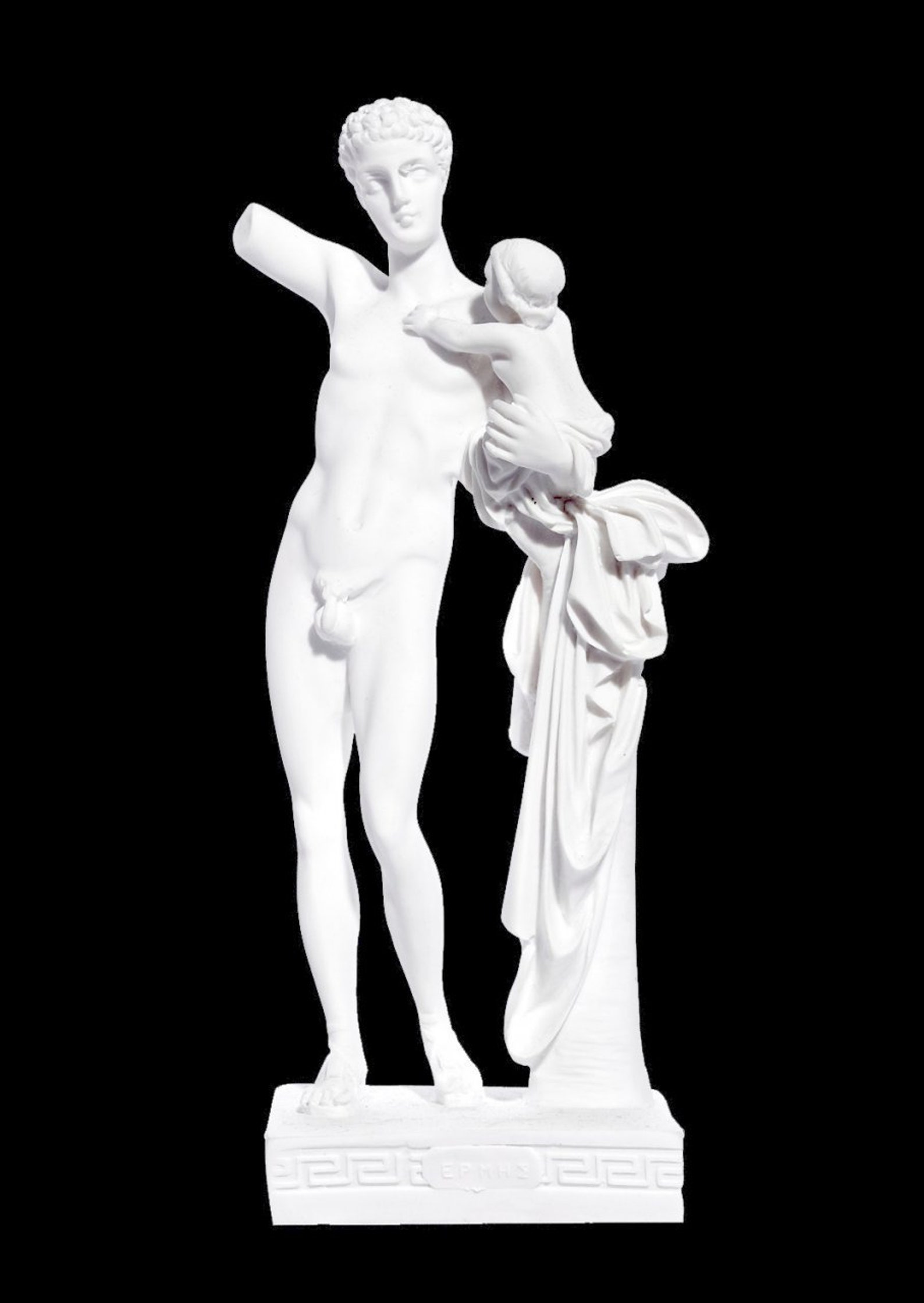
Hermes and the Infant Dionysus Statue Hermes of Praxiteles Etsy UK
Medallion representing Praxiteles. Praxiteles (/ p r æ k ˈ s ɪ t ɪ l iː z /; Greek: Πραξιτέλης) of Athens, the son of Cephisodotus the Elder, was the most renowned of the Attica sculptors of the 4th century BC. He was the first to sculpt the nude female form in a life-size statue. While no indubitably attributable sculpture by Praxiteles is extant, numerous copies of his works.

Hermes of Praxiteles also known as Hermes and the Infant Dionysus sculpture of Greek white
Definición. Hermes era el antiguo dios griego del comercio, la riqueza, la suerte, la fertilidad, la cría de animales, el sueño, el lenguaje, los ladrones y los viajes. Hermes, uno de los más astutos y traviesos de los doce dioses olímpicos, era su heraldo y mensajero. En esa posición, llegó a simbolizar el cruce de fronteras en su papel.
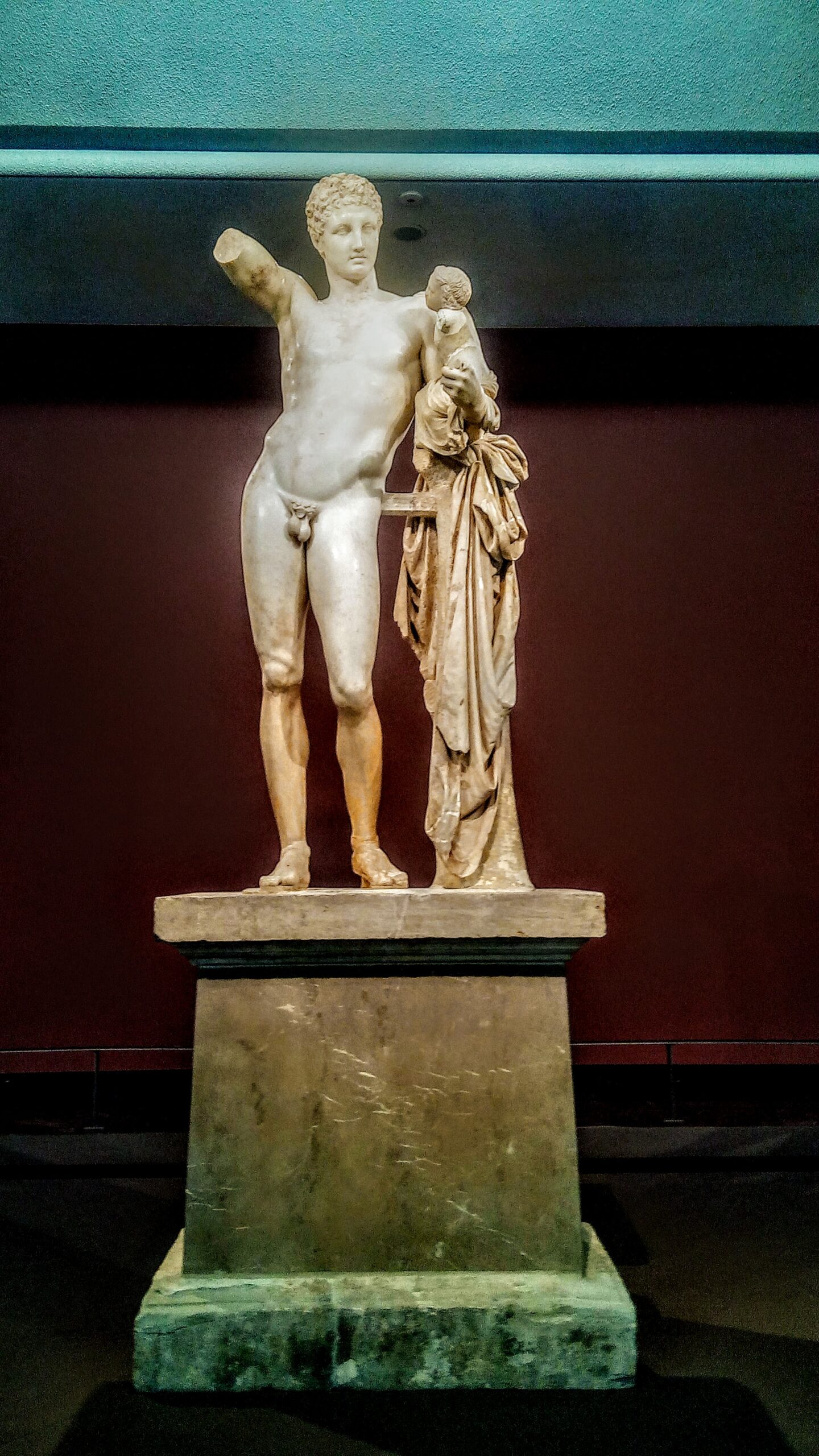
Hermes of PraxitelesHermes and the infant Dionysussculpture Art lovers
Hermes of Praxiteles Perhaps the most famous of all the statues in the Olympia Museum is The Hermes of Praxiteles. Circa 340 BCE Hermes is holding the infant Dionysus in his left arm, while he dangles a bunch of grapes in his right (missing) one. It is a typical pose that was reproduced almost identically in many ancient statues, but the.

Hermes of Praxiteles Statue Remains a Timeless Symbol of Hellenism
Heraion, and among them a stone Hermes bearing the Infant Dionysos, the work of Praxiteles." In the ruins of this same Heraion was found, in May, I877, the identical group seen by Pausanias seventeen hundred years before. It was- mutilated, indeed, both arms being broken off, and both legs a little.